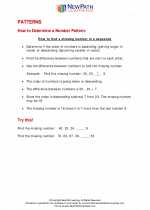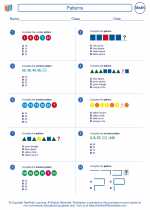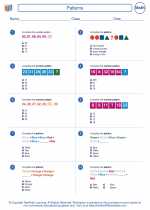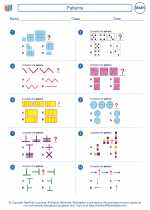Transformation
Transformation in math refers to the process of changing the position, size, or shape of a figure. There are four main types of transformations: translation, reflection, rotation, and dilation.
Translation
A translation is a transformation that slides a figure in a specific direction without changing its shape or orientation. The figure moves a certain distance in a certain direction. This can be described using a vector, which includes the direction and distance of the movement.
Example: The point (x, y) translated by (a, b) becomes (x + a, y + b).
Reflection
A reflection is a transformation that flips a figure over a line called the line of reflection. The line of reflection acts as a mirror, and each point on the original figure has a corresponding point on the reflected figure that is the same distance from the line of reflection but on the opposite side.
Example: The reflection of point (x, y) over the x-axis becomes (x, -y).
Rotation
A rotation is a transformation that turns a figure around a fixed point called the center of rotation. The amount of rotation is specified by the angle of rotation. A positive angle indicates a counterclockwise rotation, while a negative angle indicates a clockwise rotation.
Example: The rotation of point (x, y) by θ degrees becomes (x*cos(θ) - y*sin(θ), x*sin(θ) + y*cos(θ)).
Dilation
A dilation is a transformation that resizes a figure by a scale factor, which can either enlarge or reduce the size of the figure. The center of dilation is the fixed point about which the figure is enlarged or reduced. The scale factor determines the amount of enlargement or reduction.
Example: The dilation of point (x, y) by a scale factor of k becomes (kx, ky).
Study Guide
Here are some key points to remember when studying transformations:
- Understand the definition and properties of each type of transformation.
- Be able to identify and perform transformations on different figures using coordinates and geometric shapes.
- Practice determining the image of a figure after a given transformation has been applied.
- Explore real-life examples of transformations, such as in art, architecture, and design.
- Review how transformations can be combined and applied in sequence to achieve a desired result.
Remember that understanding transformations is essential for geometry and can also be useful in other areas of math and everyday life.
.◂Math Worksheets and Study Guides Fifth Grade. Patterns

 Worksheet/Answer key
Worksheet/Answer key
 Worksheet/Answer key
Worksheet/Answer key
 Worksheet/Answer key
Worksheet/Answer key
